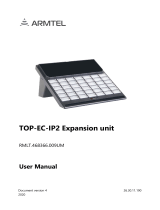
ix
Microprocessor ...................................................................................................4-6
MC68xx040 Cache......................................................................................4-6
No-VMEbus-Interface Option............................................................................4-7
Memory Options.................................................................................................4-7
DRAM .........................................................................................................4-7
SRAM..........................................................................................................4-8
About the Battery.........................................................................................4-9
EPROM and Flash Memory......................................................................4-11
Battery-Backed-Up RAM and Clock................................................................4-12
VMEbus Interface and VMEchip2...................................................................4-12
I/O Interfaces ....................................................................................................4-12
Serial Communications Interface ..............................................................4-13
IndustryPack (IP) Interfaces......................................................................4-13
Ethernet Interface ......................................................................................4-14
SCSI Interface............................................................................................4-15
SCSI Termination......................................................................................4-15
Local Resources................................................................................................4-15
Programmable Tick Timers.......................................................................4-16
Watchdog Timer........................................................................................4-16
Software-Programmable Hardware Interrupts...........................................4-16
Local Bus Timeout ....................................................................................4-16
Local Bus Arbiter..............................................................................................4-17
Connectors........................................................................................................4-18
Remote Status and Control........................................................................4-18
CHAPTER 5 Pin Assignments
Connector Pin Assignments.......................................................................................5-1
Remote Reset Connector - J2.....................................................................................5-2
IndustryPack A and B Connectors.............................................................................5-2
Ethernet Connector - J9 .............................................................................................5-4
Serial Connector - J17................................................................................................5-4
SCSI Connector - J23.................................................................................................5-5
VMEbus Connectors (P1, P2)....................................................................................5-5
APPENDIX A Specifications
Board Specifications.................................................................................................A-1
Cooling Requirements ..............................................................................................A-2
Special Considerations for Elevated-Temperature Operation ...........................A-3
EMC Regulatory Compliance...................................................................................A-4




















